#Prussian P8
Explore tagged Tumblr posts
Text
Random Trains I Found Part 1:
So, I've put off writing my myriad of WIPs for a bit to spend some time just... looking at trains. Reconnecting with them. Hunting out ideas for the future and being amazed by the past. And here's a few of my absolute favourite random, insane trains I've found so far:
NGR Class D1:
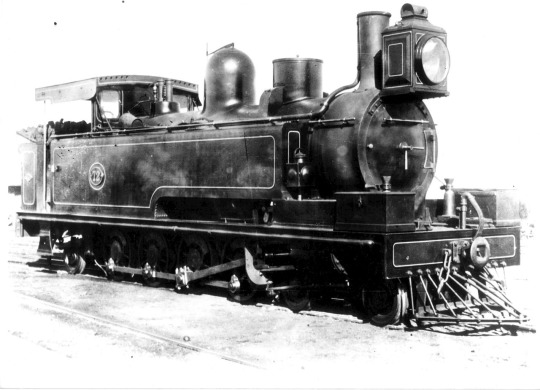
This right here was the first 4-8-2 ever built - and it's an absolutely massive tank engine from South Africa. It was built to the 3ft 6in Cape Gauge and it began running in 1888. Take a moment for that to settle in - 1888. The USA didn't run a 4-8-2 on it's network until 1911, a good 20+ years later!
Russian Class Kh:
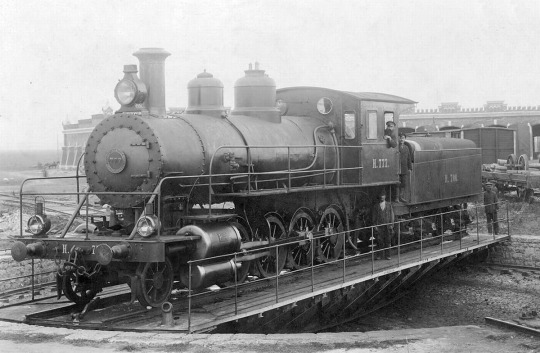
It's a 2-8-0 class built in the USA for Russia that had examples sold to Japan with the last example preserved in China. I personally like these engines because they really do tell us so much about how much the world changed - they began life in 1895, and somehow (I would love to know how if anyone has any information) one ended up in a river in Jilin Province, China. It was probably WWII, but all the same, these engines went places!
Prussian P8 Class:
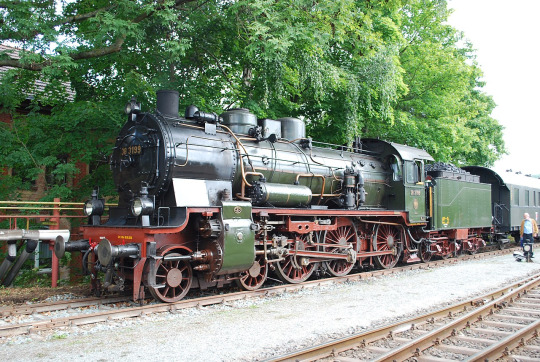
These engines started life in 1908 and weren't retired until 1981 in Poland at the latest - and if that isn't an opening to an epic class of locomotive, I don't know what is! Roughly 3900 of these machines were built, making it potentially the single largest class of passenger engine in the world and they ended up just about everywhere in Europe, from France to Norway to Romania, where a number (200) were built under license. And the reason they lived so long? They were simple, strong machines.
GWR 2600 'Aberdare' Class:
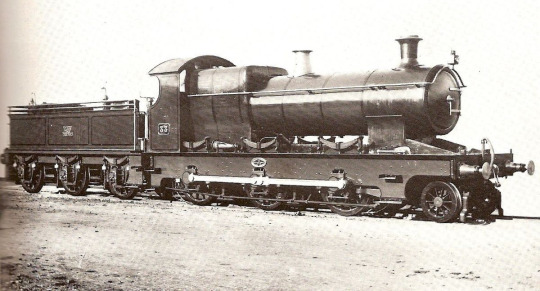
Honestly, I just like these because they look so odd. Like, these are GWR 2-6-0s that look like a City or a Bulldog class. They have the double frames and the coupling rods of a 4-4-0 - and that's because they were introduced in 1900. They did manage to make it to 1949 hauling coal trains, but the GWR had already been withdrawing them in the 1930s, as they did with their older stock. I wish one had been preserved, they'd be so cool to look at!
NGR Class C:
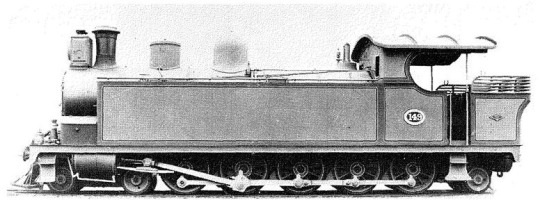
Last but certainly not least, these behemoths of South Africa once again prove that somehow, the former Cape Colony was at the forefront of wheel arrangement innovation. It's a 4-10-2T. It was built in 1899, alongside the GWR Bulldog class! These things were massive... and eventually rebuilt to 4-8-2T locomotives. But there were 137 of them built, making them the most numerous of the 4-10-2 type locomotive ever constructed.
I want all of these engines. I would love to know more about them, I would love to own one (in model form) and I am going to love continuing my journey through railway history to find more random, interesting locomotives to share.
And as usual, all images belong to their respective owners.
#weirdowithaquill#railways#real railway stuff#real world trains#South African Railways#Prussian P8 locomotive#Russian Kh locomotive#gwr#Aberdare Class#real trains are so cool#And leaving my UK-centric railway view to explore is a lot of fun!#random railways#random thoughts
23 notes
·
View notes
Video
RD4845 38 1301 Nördlingen by Ron Fisher Via Flickr: 2010/05/25.RD4845. Although apparently a Prussian P8 class 4-6-0, Helmut Dahlhaus informs me that 38 1301 is actually based in Austria where it runs as ��BB 638.1301. However, it was originally built under licence in Romania to the Prussian design in 1935 where it was 230.301. Thanks Helmut. Having seen and ridden behind it over the weekend at the Deutsches Dampflok Museum at Neuenmarkt-Wirsberg, I was pleased to see it again in Nördlingen at the Bayerisches Eisenbahn Museum a couple of days later. The locomotive is normally based at the Austrian Society for Railway History (ÖGEG) site at Ampflwang between Salzburg and Linz. Tuesday, 25th May, 2010. Copyright © Ron Fisher.
1 note
·
View note
Photo

Prussian P 8 by HariesAutoMoto
0 notes
Text
Wipers or Vipers 2
Research into the origin and indeed the authenticity of ‘Vipers’ as a slang name for Ypres continues. There are a number of leads and possibilities: was it a mistake; a transcription of a slang German name for the place; a projection by Anglophones of a slang German name for the place; a name marking bitter feelings towards the place; or something else? The appearance of the term in the Publishers’ Circular in 1920 means that this merits a thorough investigation.
Firstly, how did people feel about vipers at the time? There is ample evidence that actual vipers were treated as pests, to be killed. ‘At North Park, Tedburn, recently, Mr W Coldridge killed a viper which measured 2ft 6in. in length. On being opened seven young ones were found inside, as well as a fully grown mouse. The viper is regarded as a very fine specimen’ (Western Times, 9 April 1915, p14). ‘A large snake was found in a farmhouse at Southery Ferry one day last week, and a viper has been killed in the middle of Southery village’ (Thetford and Watton Times and People’s Journal, 20 February 1915, p4). But some documentation reveals some unsureness as to the identity of the animals: ‘Mr F. and his son on one day killed eleven vipers, two snakes, and one adder. On another occasion they destroyed eight vipers and two snakes’ (Exeter and Plymouth Gazette, 30 April 1915, p5).
In this context it is easy to see how the epithet ‘viper’ would be applied to anyone hated, particularly if there was an element of deception involved: thus in Rome the Grand Master of the Freemasons described pacifism as ‘a viper which lay hidden, but whose head must be crushed’ (Dundee Evening Telegraph, 27 November 1917, p1). Turkey, in siding with the Central Powers ‘has acted like a viper to us her old friend and ally’ (Warwick and Warwickshire Advertiser, 13 March 1915, p5). The submarines that sank the Aboukir, the Hogue and the Cressy in September 1914 were described by René Milan as ‘submarine vipers’ (Vagabonds of the Sea, 1919, p48).
‘Viper’ was a straightforward term of abuse against the enemy: a Belgian citizen living in Britain, who took his own life at the beginning of the war, left a note describing the Kaiser as ‘that ferocious human viper of Germany.’ (Newcastle Journal, 2 August 1914, p8). ‘Kaiser-Americans’ were ‘A Nest of Vipers in the States’ (Nottingham Evening Post, 3 August 1915, p3). Following the sinking of the Lusitania, the Dublin Daily Express called for ‘the stamping out of the Prussian vipers or the effective removal of their fangs’ (10 May 1915, p4). German rage against Britain was exemplified in ‘torrents of abuse, floods of fantastic falsehoods, and an ineradicable conviction that the British people are a race of vipers, dastards, bloodsuckers, liars, thieves, murderers, and traitors!’ (Liverpool Echo, 17 January 1917, p3).
British citizens could also be vipers: professional footballers who did not enlist were ‘traitors’ and ‘vipers’. (Manchester Evening News, 7 April 1915, p7). George Lansbury, the socialist politician, condemned the Pall Mall Gazette for describing ‘all those who advocate peace as “vipers”’ (Daily Herald, 3 July 1915, p3). Elsewhere pacifism was equally treated: The critics of Sir Douglas Haig were ‘The Vipers at Work’ – ‘he treated [their] viperous attacks with the contempt they deserved.’ (Globe, 17 December 1918, p2).
Yet the term could also be employed for the animal’s attributes of sudden striking in effective places – in 1899 the Navy’s first turbine destroyer was HMS Viper, though the Navy soon abandoned the use of snake names for ships (though the Western Mail, 11 March 1915, p8, implied that there was a still an HMS Viper in use). Thus ‘viper’ as a term could have useful connotations; but during the war it was generally a negative epithet.
As previously discussed, Ypres occupied a special place in British sentiment, typifying stubborn resistance, loyalty to an ideal, and the projection of these onto a place. But the Ypres League, the Ypres Times, Ypres Day, were post-war constructs. While there is a string tendency to interpret The Wipers Times as lightheartedness in the face of death, it can equally be read as cynical gallows humour, a shout of rage at the futility of the soldier’s situation: there is no love for Ypres in its pages. The patriotic bombast of The War Illustrated might announce that the ashes of Ypres were ‘impregnated with the spirit of Albion’s immortal glory’, but it was still ‘The Dead City’ (p1180, July 1915), a place that ‘smells of lilac and of death’ (S Macnaughtan, A Woman’s Diary of the War, 1915). Already by June 1915 people in Britain were aware that Ypres held a special place of fear for the soldier: David Lloyd George made a speech in Manchester on 3 June, in which he urged the need for greater efficiency in the manufacture of weaponry; particularly the labour force had to work where it was needed, not where it desired, just as was the case for soldiers – ‘The enlisted workman cannot choose his locality of action. He cannot say, “Well, I am quite prepared to fight at Neuve Chapelle, but I won’t fight at Festubert, and I am not going near the place they call ‘Wipers’”’ (The Times, 4 June 1915, p9).
Looking again at the documentation we have for the use of ‘Vipers’ for the place-name, we have the following:
Thanet Advertiser, 23 January 1915, p3, reporting a speech given by a vicar during an evening of talks: ‘Mr Tonks remarked that in connection with this town one was reminded of the optimistic humour of the British “Tommy”. For him, the pronunciation of the town is “Vipers”, and the spirit of lightheartedness revealed by such nick-names must surely assist our men in their struggle for victory.’
The Middlesex Chronicle 26 June 1915, p3: ‘Private E. W. Smith, of Whitton, who writes, under date of June 13th, sends two verses composed by a member of his brigade, … He says “I know those at home are only too delighted to hear and know what ‘Tommy’ sings, even if it only light parody.”
Far far from Ypres (vipers) I long to be.
Where German snipers can’t pot at me.
Think of me crouching where the worms creep
Waiting for something to put me to sleep.
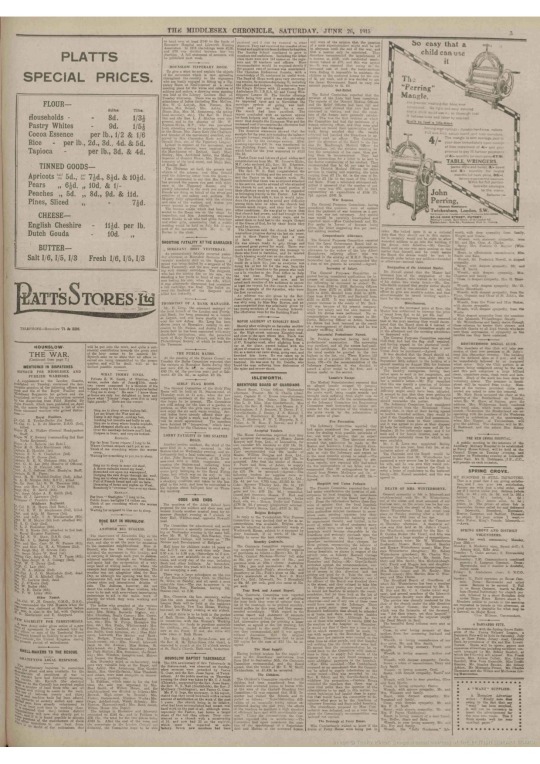
The Manchester Guardian, 29 December 1915, p7: ‘Frenchmen who call Ypres ‘Wipers’. This includes the statement: ‘The gallant army of France has for generations pioneered military progress, yet today the poilu is assimilating British ways and British methods in an extraordinary manner. He is even carrying it to the length of pronunciation. When the French soldier speaks of “Wipers” in the most natural manner imaginable as though he had never called it anything else and sings “Tipperary” as frequently as his own glorious anthem, we may be prepared for anything.’
Imagine how ‘Wipers’ would be pronounced in a French accent: it would probably depend whether the speaker were imitating spoken English, in which case it would be more like ‘ooïpers’, or speaking from the written form, more likely to be ‘vipers’ (as in ‘wagon-lits’).
Evening Despatch, 14 February 1916, p1: a cartoon of German soldiers, with the caption ‘It is stated that German soldiers have a dread of being sent to the Ypres front [see Lloyd George’s speech above]. Some have committed suicide rather than face it. Soldiers’ chorus on being ordered to Ypres :-
O Faderland, my Faderland,
Thy face I never more shall see;
The Englishes at Vipers vos-
Dis is der place for me.
The Publishers’ Circular, 3 January 1920, p7: ‘Ypres, or “Vipers,” as Tommy called it, is a name which will long be remembered by the families of the men from all parts of the Empire who fought and died there. …’
So we see a projection of the term as German pronunciation – critically, no slang name for Ypres in German has been found -, as a projected French pronunciation, one military and two civilian documentations of ‘Vipers’, one of the civilian usages being post-war. There is a possibility that any of the last three were mistakes or individual usages; it is likely that the two civilian usages were acquired from soldiers, the Publishers’ Circular one possibly being from a former soldier. There is also the residence documentation of Private E. W. Smith, Whitton, near Hounslow, now part of Greater London, but then a village to the west of London.
A change of direction: also in the Globe, on 19 January 1916, p2, there appears this:
The “vipers” alluded to in a morning paper as circulating traitorous and disloyal leaflets and circulars must be a kind of pen-viper, as Mr. Sam Weller would say.’ What the writer is alluding to here is the by then centuries-old phenomenon in the London accent of the v/w merger, whereby ‘v’ was pronounced as ‘w’ and vice versa: Sam Weller in Dickens’ The Pickwick Papers is the most well-known exponent of this (“All good feelin’, sir—the wery best intentions, as the gen’l’m’n said ven he run away from his wife ‘cos she seemed unhappy with him”).
There has been considerable argument over the authenticity of this transcribed accent. William Matthews in Cockney Past and Present ([1938] 1972) quotes B Smart (Walker Remodelled, 1836) as saying that it was outmoded in the 1830s, and that A W Tuer, author The Kawkneigh Awlminek (1883), claimed that Weller was ‘exceptional in his pronunciation’ (p180); Ernest Weekley, born in 1865, claimed that though he had heard ‘weal’ for ‘veal’ and ‘wittles’ for ‘victuals’, he had never heard the reverse substitution of ‘v’ for ‘w’. Comedians such as Gus Elen were using the ‘w’ for ‘v’, as in ‘wery good’, well into the 1930s. Peter Wright quotes Henry Wyld as hearing people say ‘vild’ for ‘wild’ as a joky imitation of speech from about 1850 (Wright P, Cockney dialect and slang, London: Batsford, 1981, p137). Supposed to have died out in the nineteenth century, there were remnants of the accent still to be found in the south-east of England: George Bernard Shaw in a note to Captain Brassbound’s Conversion (1900), wrote: “When I came to London in 1876, the Sam Weller dialect had passed away so completely that I should have given it up as a literary fiction if I had not discovered it surviving in a Middlesex village, and heard of it from an Essex one.” Note ‘in a Middlesex village’.
Peter Trudgill in Investigations in Sociohistorical Linguistics (Cambridge, 2010, p65) offers the following: ‘Wakelin [1972: 95-6] writes that the Survey of English Dialects (SED) materials from the 1950s and 60s) show that “in parts of southern England, notably East Anglia and the south-east, initial and medial [v] may appear as [w]’. One of the examples given is ‘viper’. Thus, well into the twentieth century in parts of southeast England ‘viper’ was being pronounced as ‘wiper’.
Now, going back into the nineteenth century, the example frequently given to show the use of this merger of sounds is ‘an old cockney conundrum’ (Wright, p137). This is to be found in Errors of Pronunciation, and Improper Expressions, Used frequently, and chiefly by The Inhabitants of London, published in 1817. On page 34 we find, under V:
V, for W; and W, for V. This error is constantly committed by the vulgar. Veal and Vinegar are by them pronounced Weal and Winegar; whilst, Wine and Wind are sounded Vine and Vind. There is an old cockney conundrum which exemplifies this error:
Why is a pocket-handkerchief like a species of serpent? Answer – Because it’s a viper.
So a) there is anecdotal evidence of the v/w merger surviving in the southeast of England into the twentieth century, often but not always as joke or performance;
b) its exemplary form appears in a joke which specifically mixes ‘wiper’ and ‘viper’;
c) the cockney/London/southeast England accent was recognised as the dominant accent of the British Army on the Western Front: much evidence supports this claim, from ‘Ole Bill to the large number of London street names used as trench names. As an example of how this was translated to the Home Front, the boys’ comic The Dreadnought marked its recognition of the importance of the war to its readers with the announcement, (29 August 1914) 25 days after the declaration of hostilities, that it would be printing a war story every week, followed on 3 October with the beginning of its first war serial, which is centred on the main character of ‘Bill Stubbs, the Cockney Hero’.
Thus it is possible that the use of ‘Vipers’ for ‘Ypres/Wipers’ was an application, self-conscious perhaps, of a vestigial phenomenon in the all important wartime London/southeast England accent.
As a note here, an article in the Sunderland Daily Echo and Shipping Gazette 13 June 1917 (p2), not only indicated that the use of ‘Wipers’ was disappearing, but that it was seen as ‘uneducated’: ‘Now that there are more educated men in the ranks the pronunciation “Wipers” is dying out; in fact it is almost resented’. This is the reverse of what is implied by most of the evidence, that ‘Wipers’ was officers’ pronunciation, and had educated class connotations. ‘Educated’ men may have been more equipped to pronounce Ypres using the French pronunciation, but resentment was more likely to have been at civilians, and especially journalists, using the term.
The three instances, the Thanet Advertiser of January 1915, the Middlesex Chronicle of June 1915, and the Publishers’ Circular of January 1920, are the most noteworthy. The first two document local SE England pronunciation – the Rev Tonks in Thanet may have heard it from a local soldier on leave or convalescing, and though this can never be more than conjecture, he does link it with the well-documented terms ‘Jack Johnson’ and ‘Black Maria’. Recently another instance has emerged in the Publishers’ Circular, in an article published on 25 September 1915 (p271) in a review of S Macnaughtan’s A Woman’s Diary of the War: ‘… relating experiences in Antwerp during the siege, Furnes, the first battle of Ypres – or “Vipers,” as our “Tommies” call it.’ Compare this with the 1920 text: ‘Ypres, or “Vipers,” as Tommy called it’. Close reading of Macnaughtan’s A Woman’s Diary of the War shows there is no instance throughout that book of the use of ‘Wipers’ or ‘Vipers’ or slang names for any Belgian or French towns, though she does self-consciously use slang terms, such as ‘it “bucked one,” as schoolboys say’ (p44) or ‘with “Jack Johnsons” still whizzing overhead’ (p46). So this use of ‘Vipers’ is clearly an inclusion by a Publisher’s Circular editor, quite possibly the same person using a close variation five years later. After reading through every issue of the Publisher’s Circular from August 1914 to July 1916, I think it is unlikely that the source for this usage will appear.
2 notes
·
View notes
Photo

Dampflokomotiven 38 2267 (preußische P8) & 55 3345 (preußische G7.1)
Dampflokomotiven 38 2267 (preußische P8) & 55 3345 (preußische G7.1)
#dampflokblog.de#38 2267#Preußische P8#Prussian P8#BR38#BR 38#55 3345#preußische G7.1#prussian G7.1#BR55#BR 55#dampflok#steam locomotive#locomotive à vapeur#stoomtrein#Steam train#locomotora#locomotive#lokomotywa#Eisenbahnmuseen & Betriebshöfe#Railway Museums & Depots#Eisenbahn#Railway#Henschel & Sohn#鉄道#локомотив
38 notes
·
View notes
Photo

38 2267 (Preußische P8) nach der Restaurierung und Wiederinbetriebnahme im Eisenbahnmuseum Bochum Dahlhausen 2023
38 2267 (Prussian P8) after restoration and recommissioning at the Railway Museum Bochum Dahlhausen 2023
#dampflokblog.de#38 2267#Preußische P8#Prussian P8#Eisenbahnmuseum Bochum#dampflok#steam locomotive#stoom locomotief#locomotive à vapeur#stoomtrein#Steam train#locomotora#locomotive#lokomotywa#Eisenbahnmuseen & Betriebshöfe#Railway Museums & Depots#fireless locomotive#Railway#鉄道#локомотив
42 notes
·
View notes
Photo

Personenzuglokomotive 38 2267 (preußische P8)
Passenger locomotive 38 2267 (Prussian P8)
#dampflokblog.de#38 2267#Preußische P8#Prussian P8#BR38#BR 38#dampflok#steam locomotive#stoom locomotief#locomotora a vapor#locomotive à vapeur#stoomtrein#Steam train#locomotora#locomotive#lokomotywa#Eisenbahnmuseen & Betriebshöfe#Railway Museums & Depots#Railway#鉄道#локомотив
28 notes
·
View notes
Photo
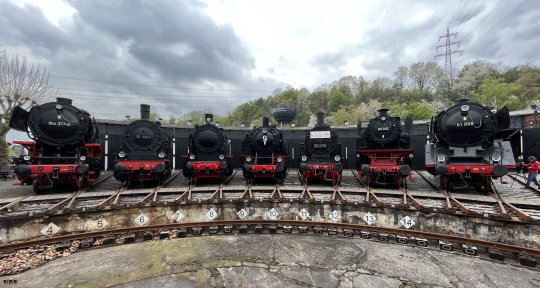
Museumstage Eisenbahnmuseum Bochum
In Bochum Dahlhausen sind an diesem Wochenende 29. und 30. April 2023 die Museumstage.
Neben diesen schönen Dampflokomotiven (welche auch nach und nach auf der Drehschreibe präsentiert werden), gibt es auch 2 aktive Dampflokomotiven die auf dem Gelände fahren.
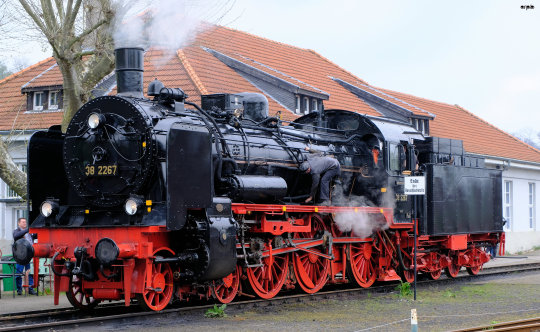
Die generalüberholte preußische Dampflokomotive der Baureihe P8 (38 2267), die endlich wieder unterwegs ist und die Dampflok V der Hespertalbahn.

Es sind sogar Führerstandsmitfahrten mit beiden Lokomotiven möglich.
Für das leibliche Wohl ist natürlich auch gesorgt. Wer also morgen (30.04.2023) noch nichts vor hat sollte sich dieses Ereignis nicht entgehen lassen.
Museum Days Railway Museum Bochum
In Bochum Dahlhausen there are thr museum days on this weekend 29th and 30th of April 2023.
In addition to these beautiful steam locomotives (which are also gradually being presented on the turntable), there are also 2 active steam locomotives running on the site. The overhauled Prussian steam locomotive of the P8 series (38 2267), which is finally back on track, and the steam locomotive V of the Hespertalbahn. It will even be possible to take a ride in the driver's cab of both locomotives.
Of course, refreshments will also be provided. So if you don't have any plans for tomorrow (30.04.2023), don't miss this event.
#dampflokblog.de#Eisenbahnmuseum Bochum Dahlhausen#044 377-0#55 2345#RAG D724 (80 030)#80 030#Hibernia 41-E#74 1192#66 002#01 008#Hespertalbahn#dampflok#steam locomotive#stoom locomotief#locomotive à vapeur#stoomtrein#Steam train#locomotora#locomotive#lokomotywa#Eisenbahnmuseen & Betriebshöfe#Railway Museums & Depots#Railway#鉄道#локомотив
25 notes
·
View notes
Photo

Dampflokomotive 38 2267 (Preußische P8) in Dienst auf einer Sonderfahrt
2016
Steam locomotive 38 2267 (Prussian P8) in service on a special trip 2016
Irgendwann stand dann die Überprüfung und Aufarbeitung an.
At some point, it was time for inspection and overhaul.
April 2018
waren noch Einzelteile des Führerstandes im Eisenbahnmuseum Bochum-Dahlhausen zu sehen, währende Kessel und Rahmen anderen Stellen instandgesetzt wurden.
In 2018, individual parts of the driver's cab could still be seen in the Bochum-Dahlhausen railway museum, while the boiler and frame were being maintained elsewhere.



April 2022
hatte ich das große Glück Arbeiten an der Lokomotive in Dahlhausen fotografieren zu dürfen.
In April 2022, I had the good luck to be able to photograph work on the locomotive in Dahlhausen.



Noch in diesem Sommer wird diese stolze Lokomotive wieder rundum aufgearbeitet und wieder betriebsbereit sein (voraussichtlich Juni/Juli 2022).
Ich freue mich schon riesig darauf ! Ich werde berichten :-)
This summer, this proud locomotive will be completely restored and ready for operation again (probably June/July 2022).
I am really looking forward to it ! I will report :-)
#dampflokblog.de#38 2267#BR38#BR 38#bochum-dahlhausen#Preußische P8#Prussian P8#dampflok#stoom locomotief#locomotora a vapor#locomotive à vapeur#stoomtrein#Steam train#locomotora#locomotive#lokomotywa#Eisenbahnmuseen & Betriebshöfe#Railway Museums & Depots#Eisenbahn#Railway#鉄道#локомотив
25 notes
·
View notes
Video
Prussian P8 Steam Engine for main line passenger work build in 1906 by Erwin Alexander
5 notes
·
View notes
Video
tumblr
38 2267 kurzes Video (short video) 720p

Zur zeit ist die 38 2267 (preußische P8) bei der großen Hauptuntersuchung. deswegen konnte sie auch in diesem Jahr nicht fahren. Beim Besuch im April 2018 in Bochum-Dahlhausen sah ich Teile des Führerhauses im Lokschuppen. Hoffentlich können wir 2019 diese schöne Lok wieder in Aktion sehen.
At the moment the 38 2267 (Prussian P8) is at the big main inspection. Therefore she could not drive also this year. During my visit to Bochum-Dahlhausen in April 2018 I saw parts of the driver's cab in the engine shed. Hopefully we can see this beautiful locomotive in action again in 2019.
17 notes
·
View notes
